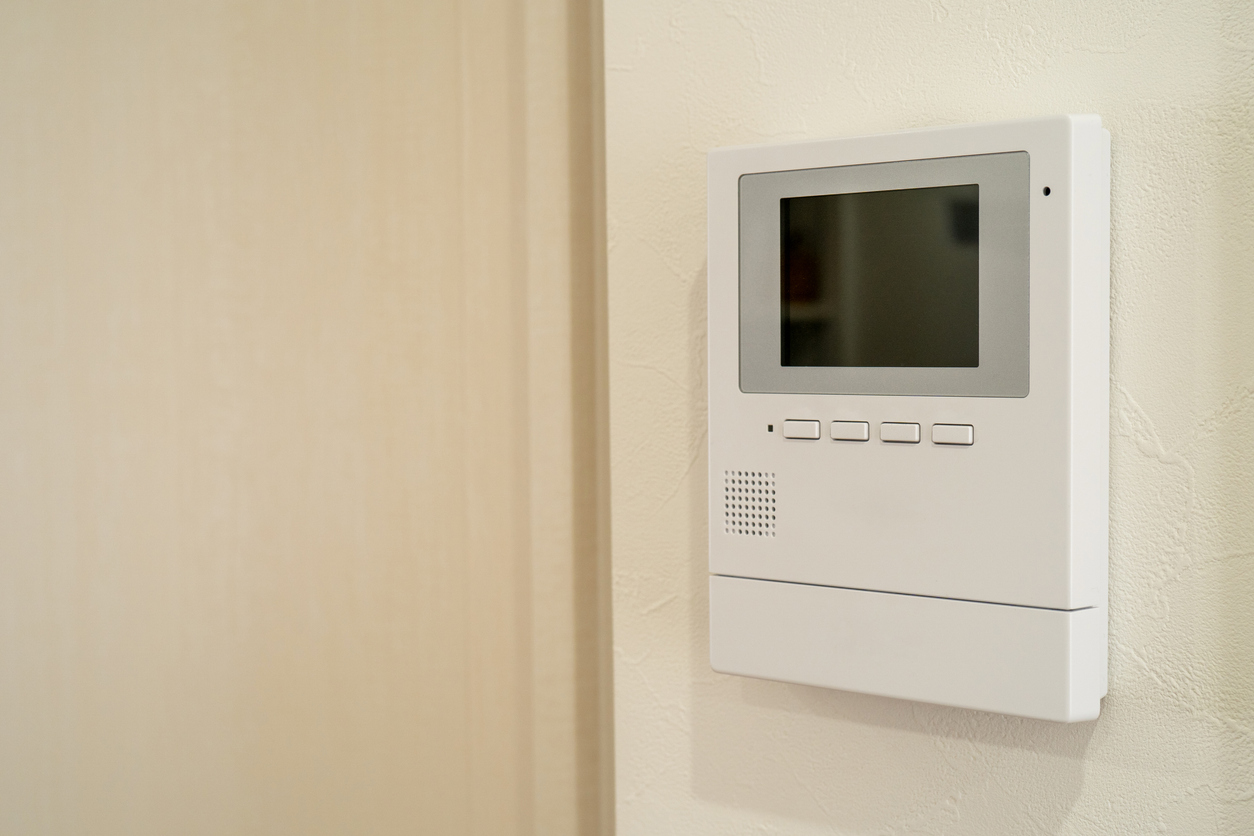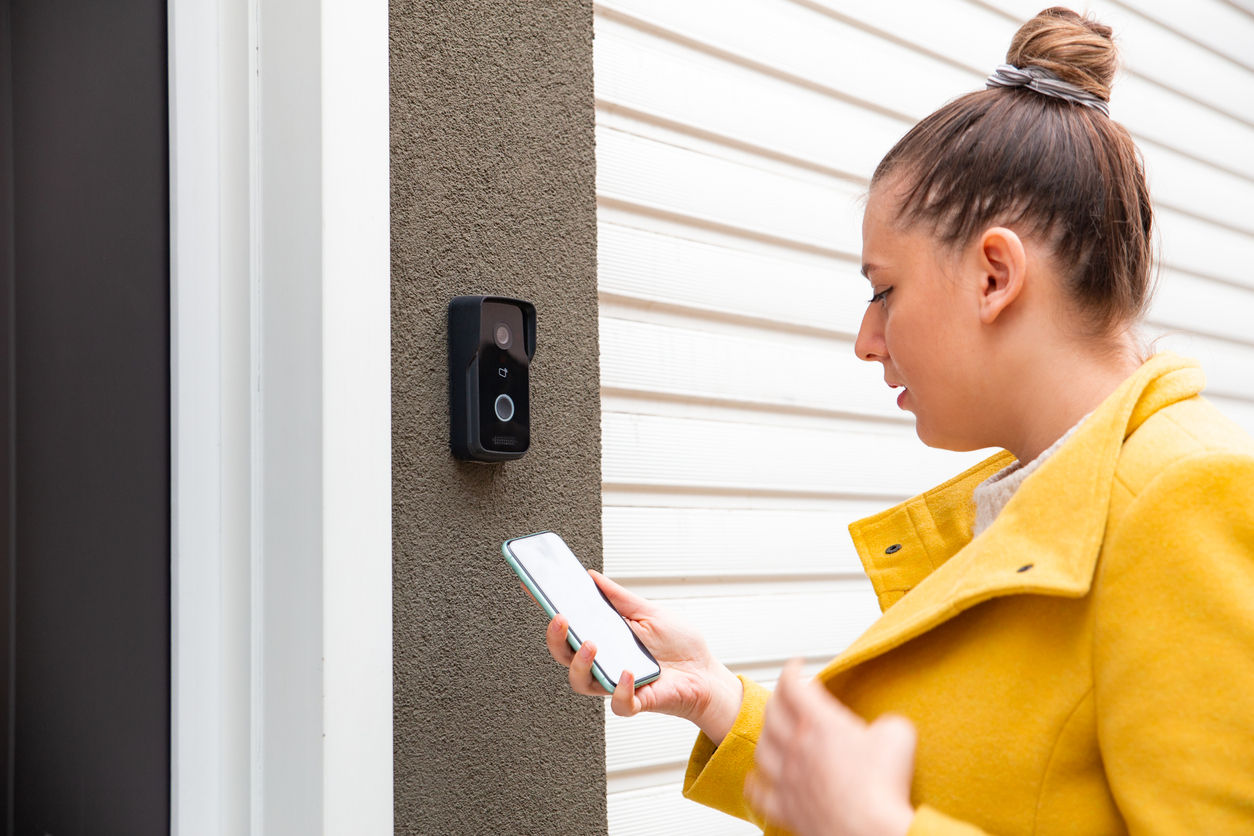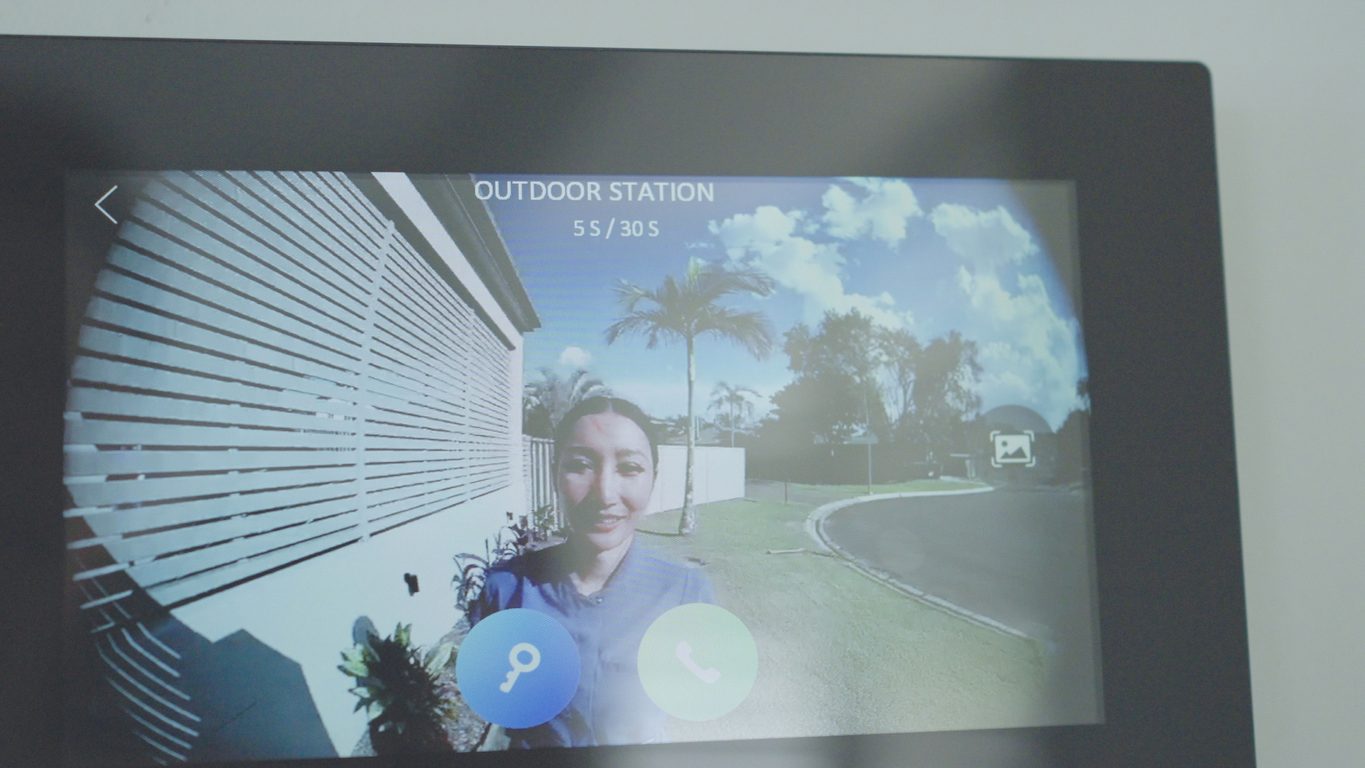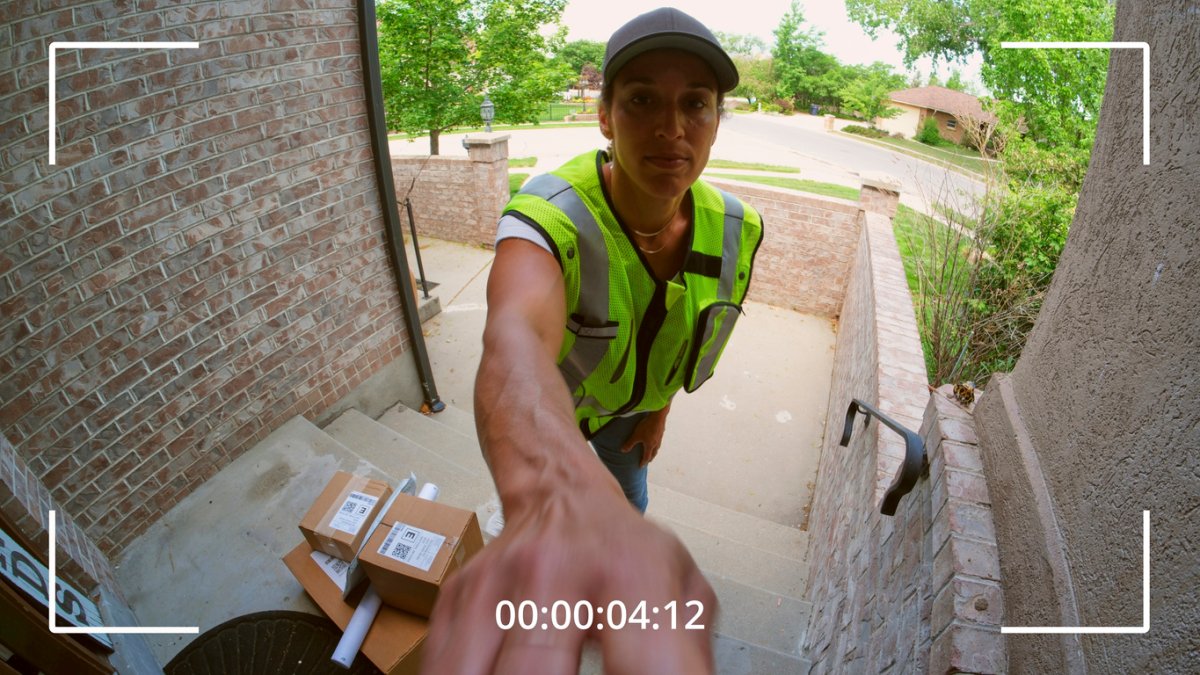We may earn revenue from the products available on this page and participate in affiliate programs. Learn More ›
Q: I’ve been looking for a doorbell camera for my home, but I’m a little nervous about it being hacked. Is there a doorbell camera that works without Wi-Fi? If so, does it require a difficult installation process or come with any significant drawbacks?
A: Of all the available types of security cameras, doorbell cameras are arguably the most popular. While most doorbell cameras (also known as video doorbells) typically require a Wi-Fi connection, that’s not the case for all of them. A handful can be purchased with support for local storage, ethernet connections, or Bluetooth—allowing you to get a premium doorbell camera without Wi-Fi.
There aren’t nearly the options available as there are for Wi-Fi doorbell cameras, as these types of video doorbells aren’t as popular as their Wi-Fi counterparts. That being said, you’ll still find a good variety of products that cover a range of budgets and offer an array of features. Although there are certainly video doorbell downsides to keep in mind, these products are generally a simple way to improve security for your home.
Whether you want something with a reliable ethernet connection or emergency cellular backup, it’s worth researching the best doorbell cameras that don’t require Wi-Fi, along with why you might (or might not) want to add one to your porch.
Many doorbell cameras use cloud storage, which means they require a Wi-Fi connection.
The vast majority of doorbell cameras rely on cloud storage. This allows the device to store video clips and other content remotely, without the need for a memory card or secondary storage device. One of the easiest ways to access the cloud is through Wi-Fi, as its wireless nature makes for a straightforward installation process and lets the doorbell connect to a router placed anywhere in the home.
Wi-Fi has become ubiquitous over the past decade, with nearly all households equipped with a router and modem. Companies producing video doorbells realize that if customers are willing to use Wi-Fi to connect their laptops and smartphones to the internet, they’re probably willing to do the same for their video doorbells. And, unsurprisingly, all the big brands produce video doorbells that support Wi-Fi for cloud storage.
Wi-Fi is also common in battery-operated security cameras, as a battery-powered doorbell camera can be placed outside any exterior door and isn’t tethered down with wires. This makes Wi-Fi doorbell cameras appealing to shoppers, as they can easily install the device in the location outside where it will work best while ensuring it’ll connect to the internet and gain cloud access.
Unfortunately, Wi-Fi isn’t a great fit for everyone. Some homes in rural areas may have poor internet connectivity. Others might need to install their video doorbell far away from their router, resulting in a poor connection and, ultimately, poor performance. Still others may not be comfortable transmitting video footage over Wi-Fi. Despite these drawbacks, most of the best video doorbells still use cloud storage accessed via Wi-Fi, and it can make it challenging for shoppers to find a reliable alternative.

However, some doorbell cameras work with local storage and don’t require a Wi-Fi connection.
While Wi-Fi connectivity dominates the video doorbell market, it’s not the only format available. A growing number of companies are branching out and offering products with local storage. This lets customers save their footage directly on the video doorbell itself, negating the need for the cloud. In turn, that means there’s no requirement for Wi-Fi.
Shoppers will want to keep in mind that if they choose a video doorbells that doesn’t connect to a Wi-Fi network, they’re missing out on more than just cloud storage. One of the biggest drawbacks is the lack of remote access to video feeds. If a doorbell isn’t relying on another connection type to get it online, users will only be able to access the local storage when they’re at home.
That’s quite a big drawback, but there are also advantages to using local storage with a video doorbell. These products tend to be incredibly difficult to hack, making them perfect for shoppers concerned about security. They also typically don’t require monthly subscription fees—which can quickly eat into the budget.
Another big advantage of video doorbells with local storage is their expandable nature. These types of doorbells are designed so customers can remove a full microSD card and replace it with an empty one, allowing them to continue recording without worrying about running out of space. The old card can then be placed into any device that supports a microSD card to view saved videos.
Other doorbell cameras use ethernet to transmit data, eliminating the need for Wi-Fi.
Though not as common as Wi-Fi models, a few doorbell cameras offer support for ethernet connections. This lets users get their camera online and powered with a single wire. Best of all, it allows for all the same features they’d typically find on Wi-Fi models—such as remote access to video feeds and customization options.
Another perk of ethernet-powered doorbell cameras is enhanced security. Unless they gain a physical connection to a home’s network, it’s nearly impossible for hackers to access a video doorbell hooked up with an ethernet cable. This makes them ideal for households with serious worries about safety, as there’s a good chance the video doorbell’s feed will stay safe from prying eyes.
Most ethernet video doorbells also use the connection to provide power to the unit, meaning there’s no need to install a second cable. The streamlined setup process is great, though it’s important to note most households don’t have an existing ethernet cable running to their front-door camera doorbell position. If that’s the case, customers will need to run the cable themselves or contact a professional, making an otherwise simple DIY security system installation a major headache.

Some doorbell cameras use cellular networks rather than Wi-Fi for data transmission.
Customers who like the idea of a wireless connection but aren’t fans of Wi-Fi can seek out doorbell cameras that support cellular networks. These devices connect to the internet the same way a smartphone does, making setup as easy as picking a network and entering its password.
Shoppers could also look into purchasing a personal mobile hotspot, which typically carries monthly fees and data limits but will let certain doorbell cameras get online without the need for traditional Wi-Fi. These types of connections aren’t very popular, however, as the monthly fees associated with accessing a cellular network can become expensive. Toss in fees for going over data limits and the possibility of also needing to pay a monthly subscription to use the doorbell camera itself, and it’s easy to see how costs can spiral out of control.
Areas with poor cellular signals will experience connectivity issues and possible downtime for their devices. This includes rural areas and even select locations in cities where cellular towers have a hard time broadcasting.
Security companies that produce doorbell security cameras with stand-alone cellular connections are few and far between. Instead, customers will want to look at devices with local storage or ethernet support. These offer better flexibility and reliability and are a better fit for the needs of most homes.
Some Wi-Fi doorbell cameras have cellular backup for a more reliable connection.
Despite the drawbacks of cellular networks, they work well as a backup to traditional Wi-Fi. This means homes won’t lose access to their video feeds if their Wi-Fi goes down, as the cameras will swap to the local cellular network and continue running. It’s a powerful feature, and one that’s a great alternative to local storage and wired connections.
Of course, customers will need to use a Wi-Fi connection as their primary gateway to the internet, as the cellular connection typically only kicks in when Wi-Fi goes out. Anyone looking for Wi-Fi alternatives may not be thrilled by that prospect. However, the ability to connect to a cellular network in emergencies is an incredibly appealing feature for home security devices to have, as it makes them more versatile and reliable than those that rely solely on Wi-Fi connection. Homes with good Wi-Fi reception will want to give them strong consideration
Cellular backup support is typically found in the best home security systems (such as Vivint and ADT) and comes bundled with indoor and outdoor cameras, motion sensors, and other home security devices. For example, SimpliSafe uses this type of technology with its base station to keep customers’ security systems online during Wi-Fi outages. SimpliSafe is one of the best apartment security systems, making it great for renters looking to improve their apartment door security.
For those who don’t mind using Wi-Fi, products with cellular backup provide additional peace of mind and are a robust part of any home security system. Security cameras without Wi-Fi will continue running with cellular service, ensuring homes stay protected during outages. Some companies may even offer a security camera that connects to a phone without Wi-Fi—shoppers interested in the technology will want to inquire about the service before installation.

Doorbell cameras that don’t use Wi-Fi are harder to hack and will work even if the home’s Wi-Fi connection drops.
Because of their simple installation process and compatibility with most homes, Wi-Fi video doorbells are among the most popular types of video doorbells on the market. However, they’re not without their faults.
For one, Wi-Fi doorbell cameras are easier to hack than cameras using an ethernet connection or local storage. Most Wi-Fi networks are publicly broadcast, and if a hacker can find the network, there’s a chance they’ll be able to hack it. By contrast, a doorbell camera system hooked up with an ethernet cable isn’t publicly listed, making it much more difficult to hack and manipulate.
The same goes for devices with local storage. Unless the thief physically removes the doorbell and cracks open its microSD slot, there’s no way for them to access the files inside. Removing an entire doorbell isn’t an easy process, and it’s such a high-profile crime that only the most brazen burglars would be willing to attempt it.
Aside from being more secure than Wi-Fi video doorbells, products without Wi-Fi support will typically continue to run even if Wi-Fi goes down. This is especially true for models with cellular or local storage backups—though products running via ethernet may still experience an outage.
However, a non-Wi-Fi doorbell camera may not have live-streaming or motion-sensing capabilities.
Wi-Fi–free doorbell cameras aren’t without their drawbacks. Most notably, they often don’t support live streaming. That means users won’t be able to remotely access their video feeds while away from home.
This is particularly true for doorbell cameras running strictly with local storage. The only way to view these clips will be by removing the microSD card and placing it into a computer or other supported device. That makes it less than ideal for homeowners to keep tabs on a property while away from home.
Some products may also lack motion-sensing capabilities and other smart alerts, as many of these require cloud services accessed through Wi-Fi. If a product can’t connect to the internet, there’s a possibility customers won’t be able to access all of its features. This can vary widely by product, making it important to check the fine print of all prospective devices.
Many of these connectivity worries are negated with ethernet-enabled devices. Much like Wi-Fi, an ethernet connection lets products jump online and communicate with smartphones regardless of location. This makes a wired doorbell camera with ethernet support a great alternative to Wi-Fi models, as it offers much of the same functionality.
Shoppers will want to keep in mind that most existing homes aren’t properly wired for ethernet-supported doorbells, making their installation process more cumbersome than that of their Wi-Fi counterparts. Customers will want to carefully consider the advantages of wired versus wireless security cameras before making a purchase.

Wi-Fi–free doorbell cameras could be ideal for customers who live in areas with a spotty Wi-Fi connection.
Shoppers who live in populated suburbs or cities with strong Wi-Fi connections probably don’t need to look for doorbell cameras with other connectivity options. Wi-Fi–connected products dominate the marketplace, and since they’re reliable and easy to install, they’re a great fit for most homes.
For homes in rural areas or locations with spotty Wi-Fi signals, video doorbells with local storage, cellular backup, or ethernet ports are all but a necessity. Video doorbells are only as useful as their signal strength. If they go offline frequently, they’re not adequately protecting a property.
Many video doorbells running on Wi-Fi also require users to make monthly subscription payments. Products with local storage typically don’t require a subscription, making them another great option for shoppers on a budget. Home security subscription fees can be as little as a few dollars or as much as $50, depending on the security company and the subscription the customer opts for; either option can become a large expense when paid year after year.
For example, Ring doorbell costs include the up-front fee of buying the camera, plus up to $20 per month for monitoring fees. Frugal shoppers may prefer to consider doorbell cameras without subscriptions, as companies may raise fees over time, which can quickly add up.
Both Wi-Fi and non-Wi-Fi video doorbells are excellent additions to front door security. Each comes with its own set of quirks, and shoppers will have to decide which option is best for their needs. Those who live in areas with poor Wi-Fi connections will want to look at models with ethernet support and local storage, while many other customers will likely enjoy the simplicity of traditional Wi-Fi doorbell cameras.

